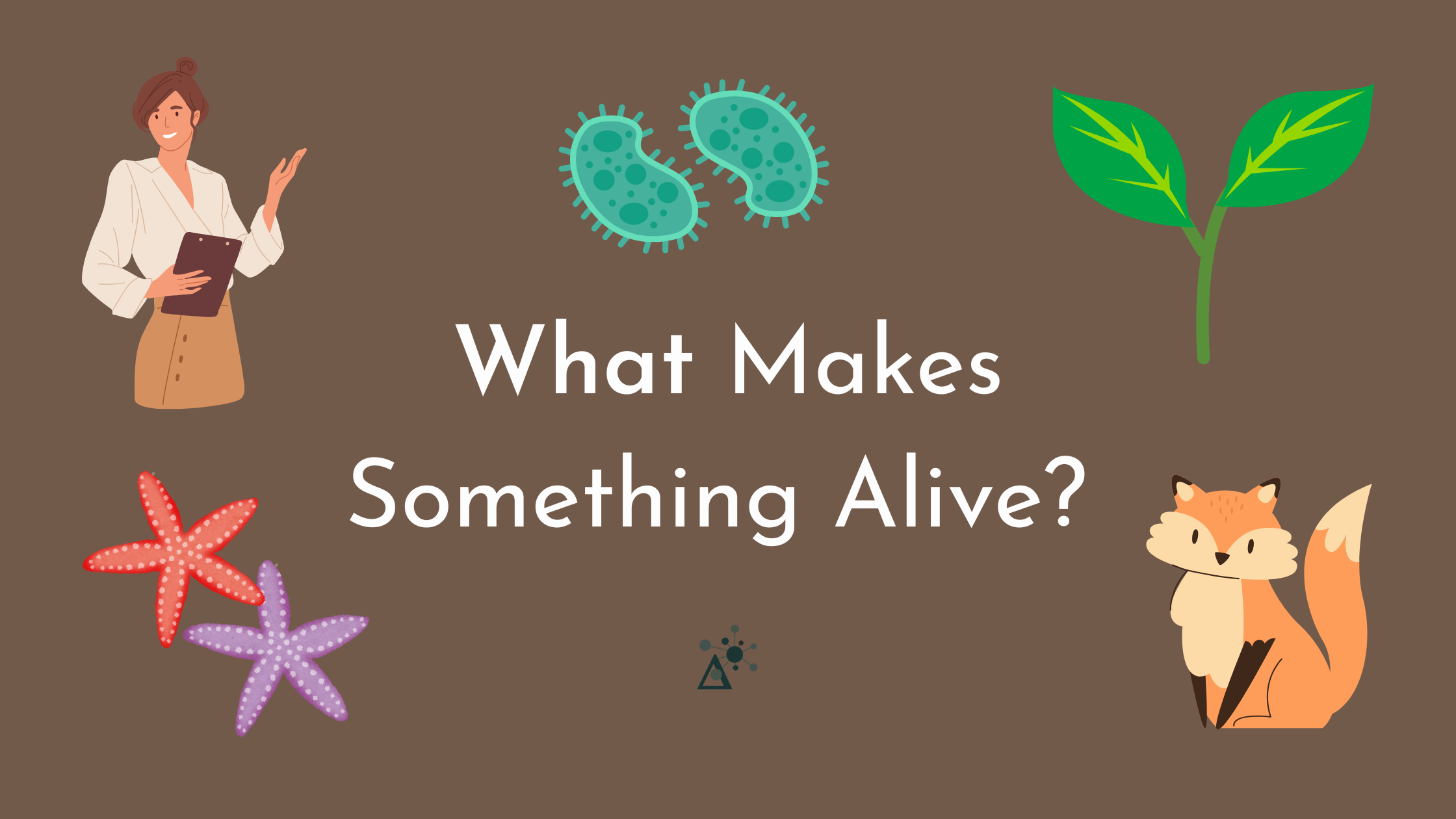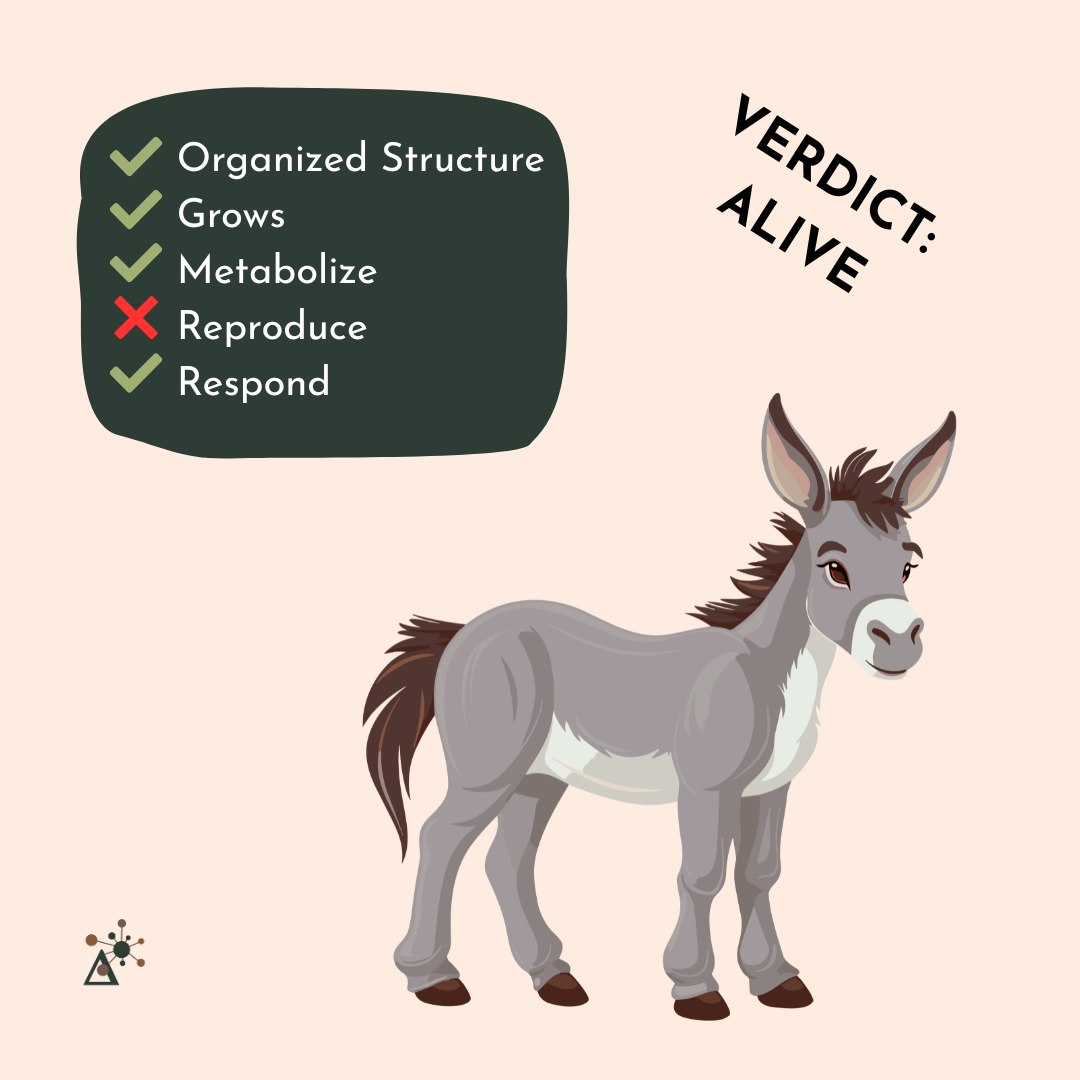The Characteristics of Life
What Does It Mean to Be Alive?
What does it really mean to be alive?
What makes you different from the phone or laptop you're using to read this article?
And what makes you similar to a plant—or even a bacterium?
Biology is the study of life. You, a plant, and a bacterium are all considered living organisms. So that brings us to a big question: What defines life?
The 7 Characteristics of Life
Biologists generally use a set of characteristics to define what it means to be alive. These include:
Organization/Order
Response to Stimuli
Reproduction
Growth and Development
Homeostasis
Metabolism
Evolution
We’ll take a closer look at what each of these means, but it’s important to remember:
⚠️ This list isn’t set in stone.
These seven traits are commonly used, but not the only way biologists define life. It’s not about checking off a perfect list—it’s about observing patterns that living things tend to share.
Organization / Order
Living things are highly organized at every level.
Unicellular organisms, or one-celled organisms, have an internal structure that includes atoms, molecules, and organelles, all working together within a single cell.
Multicellular organisms, or many celled organisms, show even more complexity: cells → tissues → organs → organ systems → organism.
Response to Stimuli
Living things respond to changes in their environment.
A plant grows toward sunlight.
Bacteria move away from harmful chemicals.
You pull your hand back from a hot stove.
Reproduction
All living things reproduce.
Unicellular organisms divide to make new cells.
Multicellular organisms reproduce sexually or asexually.
In either case, genetic material is passed to offspring.
Growth and Development
Living organisms grow and go through life stages.
A unicellular organism increases in size.
Humans grow from infants to adults, going through physical and developmental changes.
Homeostasis
Homeostasis is the ability to maintain a stable internal environment.
For example, humans regulate body temperature, blood sugar levels, and water balance, even when the external environment changes.
Metabolism
Metabolism refers to all the chemical processes that occur in an organism to maintain life.
Living things must create and use energy—whether from sunlight (like plants) or food (like animals).
Evolution
Populations of living organisms change over time.
Individuals with traits that are better suited to their environment tend to survive and reproduce.
Over generations, these advantageous traits become more common, a process called evolution.
The Exceptions
As we mentioned earlier, these characteristics are useful—but not universal. Some living things don’t meet every criterion. And some nonliving things seem to meet a few!
Here are some examples that challenge the list:
A Honeycomb
Honeycombs are organized structures that grow as bees build them—but they aren’t alive.
They don’t metabolize, respond to stimuli, or reproduce.
👉 It’s a product of life, not life itself.
A Mule
Mules (a hybrid of a horse and a donkey) cannot reproduce.
But they grow, respond, metabolize, and are made of cells.
👉 Despite one missing trait, mules are considered alive.
A Virus
Viruses can evolve and reproduce, but only inside a host.
They don’t have cells or their own metabolism.
👉 Most biologists do not consider viruses alive—but it’s still debated!
In Conclusion
Scientists are still exploring what it truly means to be alive. The characteristics of life help us make sense of the living world, but they’re not absolute. As we study life on Earth—and potentially beyond—it’s important to stay open to new discoveries and exceptions.
So now we ask you:
What do you think it means to be alive?







